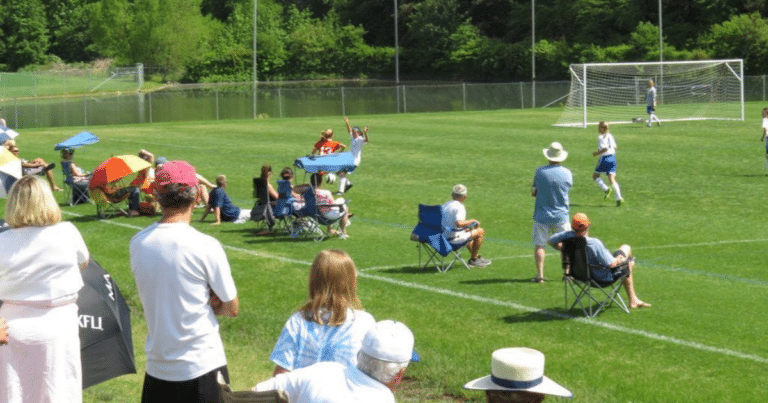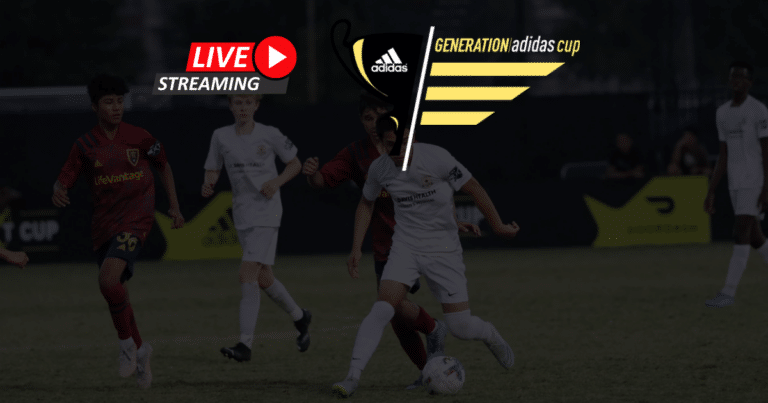ECNL Rules

The following Elite Clubs National League (ECNL) Rules are for 2023-2024 and are subject to change.
The document ECNL provides to players and coaches has every detail in it but we’ve summarized the important points.
ECNL RULES HIGHLIGHTS:
- Game length is determined by age [jump to section]
- The maximum number of players that a team can carry during a game is 18.
- There are “Trapped Rules” for U-15 & U-18/19. Certain restrictions apply.
- There is no yellow card accumulation during the season.
- A red card results in a one game suspension.
- After May 1, 2024, no players can be added to an ECNL roster.
How Long Are ECNL Games?

Age Groups & Game Lengths
| DIVISION | Born In or Before | Game Length |
|---|---|---|
| U13 | 2011 | 2 x 35 minutes |
| U14 | 2010 | 2 x 40 minutes |
| U15 | 2009 | 2 x 40 minutes |
| U16 | 2008 | 2 x 40 minutes |
| U17 | 2007 | 2 x 45 minutes |
| U19 | 2006 & 2005 | 2 x 45 minutes |
ECNL Roster Rules
- Every ECNL Member Club must have an ECNL team in ALL of the six age groups (U13-U19).
- Every ECNL player must be registered through ECNL – they are considered an ‘ECNL Registered Player’.
- Roster Maximum: A maximum of 30 players may be rostered on an ECNL team. Once a player is added to the roster, they count against the max even if they are released or transferred to another team or club.
- Game Day Roster Maximum: 18 players per team.
- Movement Between League Competitions: ECNL Registered Players can participate in any ECNL Club Competition and ECNL Regional League Competition with their club as long as they meet the following requirements:
– Age eligible
– Meet all eligibility requirements
– Compete in only one ECNL Competition per day. Players who play in multiple ECNL Competitions must be registered as an ECNL Registered Player to one primary team in one ECNL Competition. - Movement Between Age Groups: ECNL players may play in any age group of ECNL Competition within their club as long as they are age-eligible and meet the rest of the eligibility requirements. For example, a 13-year-old (U-14 player) at Club A can play up for a U-15 team at Club A.
- Movement Between League Competitions: Players may not play in multiple programs within any individual ECNL Competition unless agreed to by the Transfer Regulations.
- Collegiate Players: This probably only applies to U-19 but any player that appears on a college roster or game in the fall season is ineligible to play in any ECNL Competition.
- Player Drops: No ECNL Registered Players may be dropped from the roster unless adhered to by the Transfer Regulations or the player is released.
- Roster Freeze Date: After May 1st, players cannot be added to an ECNL Roster
- Trapped U-15 Player: An ECNL player who is in 8th grade but qualifies for the U-15 age group, is considered a ‘Trapped U-15 Player’. They are eligible to play in games at the U-14 ECNL Competition. This applies to the fall season where high school competition is played.
- Trapped U-18/U19 Player: An ECNL player who is in 11th grade but qualifies for the U-19 age group, is considered a ‘Trapped U18/U19 Player’. They are eligible to play in games at the U-17 ECNL National Events in the ECNL Regular Season. They can also play in the ECNL Club post-season except for the Champions League.
ECNL Competition Rules
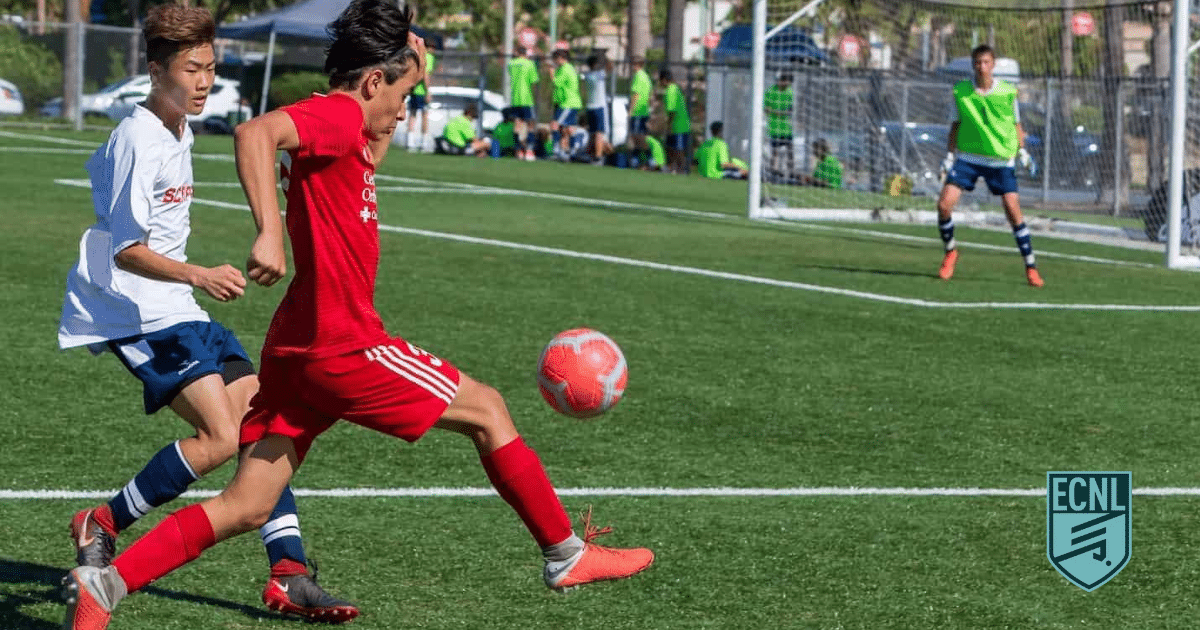
Unless otherwise stated, all ECNL Competitions will be played under the guidance of the FIFA Laws of the Game to promote fair play.
Venue and Time
The game times and venues must be agreed upon by the ECNL clubs and reported to the ECNL Commissioner no later than August 20th (for the fall season) and January 20th (for the spring season).
Referees
The home team is responsible for assigning referees.
Substitution Rules – for Club Conference and Regional League games
- Once a player is substituted in one half of any ECNL Competition, that player may not re-enter in the same half.
- There’s a max of (7) substitutions in any given half or overtime
- Regular Season ECNL National Events: Teams can make an unlimited amount of subs because of the showcasing nature of the events
Yellow Cards
Two yellow cards in an ECNL Competition will result in a red card.
There is no yellow card accumulation policy.
Red Cards
Any ECNL player who receives a red card during an ECNL Competition will be suspended for the remainder of that game as well as the next game.
If applicable, this rule will carry over from one season to the next.
Points & Standings in Regular Season
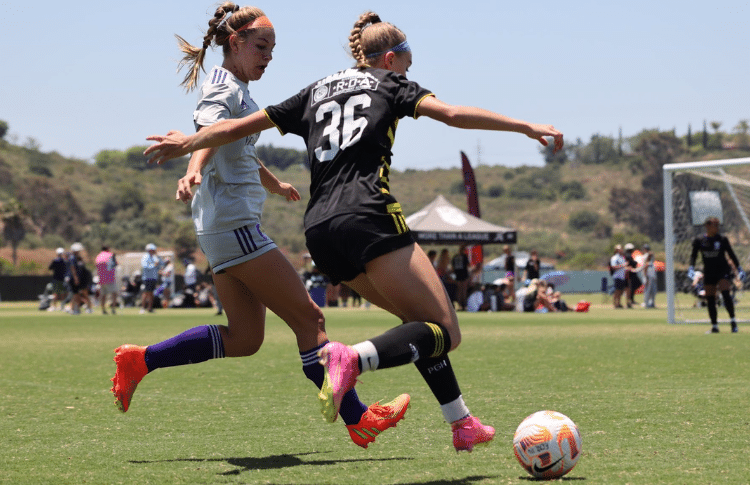
Points in Regular Season Games
Teams will be awarded the following points:
- Win = 3 points
- Tie = 1 point
- Loss = 0 points
Standings
The final standings for the ECNL season will be determined at the end of the regular season.
Tie-Breakers
If teams are tied in the regular season, the following (in order) will apply as tie-breakers:
- Total points earned in head-to-head games
- Goal Difference (GD)
- Goals For (GF)
- Goals Against (GA)
- Coin Toss (we hope it doesn’t come to this!)
Post-Season Format
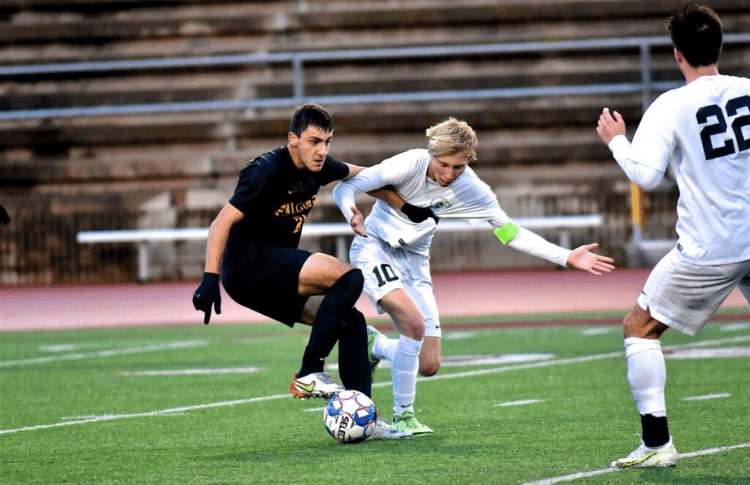
If a team qualifies, they must participate in the ECNL Post-Season. Teams will be grouped for the playoffs based on their regular season standings and qualification process.
Teams that win their postseason will become the ECNL Club Champions. Each ECNL Club will earn points towards the overall ECNL Club Championship based on the final position of each ECNL Team in every age group
The ECNL Club with the most points is crowned Overall ECNL Club Champion!
Here are the official rules that this summary is referencing: https://theecnl.com/documents/2023/9/11//ECNL_Competition_Rules_2023_2024.pdf?id=2

Written By: SoccerNovo
SoccerNovo is an independent youth soccer media brand built to help parents, players, and coaches better understand the game and the pathways available in U.S. soccer. Our mission is to make youth soccer simpler, clearer, and more accessible for everyone involved in it.
Let’s connect



